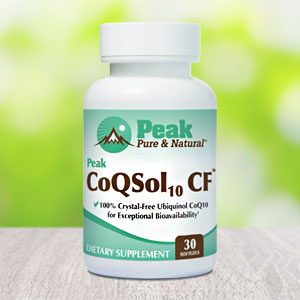Get Easy Health Digest™ in your inbox and don’t miss a thing when you subscribe today. Plus, get the free bonus report, Mother Nature’s Tips, Tricks and Remedies for Cholesterol, Blood Pressure & Blood Sugar as my way of saying welcome to the community!
Mitochondria may hold secret to Parkinson’s diagnosis and treatment

Parkinson’s disease affects more than 10 million people worldwide. There currently is no cure for this debilitating chronic condition, although certain medical treatments can offer relief from its symptoms, which include difficulty walking, tremors, cognitive challenges and eventual dementia.
Parkinson’s is characterized by inhibited dopamine function. Until recently, scientists have not fully understood the cause behind dopamine depletion. They know that there are genetic factors involved in some Parkinson’s cases. But in most cases, the cause is unknown.
One theory attributes depleted dopamine to damaged mitochondria, the “powerhouses” that produce energy within our cells. Researchers from the University of Copenhagen have discovered evidence that further supports this idea…
‘Toxic’ mitochondrial DNA
According to study lead Professor Shohreh Issazadeh-Navikas, the researchers can show for the first time that in Parkinson’s, the mitochondria within brain cells, particularly neurons, undergo damage that leads to disruptions in mitochondrial DNA.
“This initiates and spreads the disease like a wildfire through the brain,” Issazadeh-Navikas says. “Our findings establish that the spread of the damaged genetic material, the mitochondrial DNA, causes the symptoms reminiscent of Parkinson’s disease and its progression to dementia.”
When examining both human and mouse brains, the investigators discovered that the damage to mitochondria in brain cells occurs and spreads when these cells have defects in antiviral response genes. When seeking the reason for this damage and how it contributes to the disease, they found that small fragments of DNA from the mitochondria are released into the cell.
“When these fragments of damaged DNA are misplaced, they become toxic to the cell, prompting nerve cells to expel this toxic mitochondrial DNA,” Issazadeh-Navikas says. “Given the interconnected nature of brain cells, these toxic DNA fragments spread to neighboring and distant cells, similar to an uncontrolled forest fire sparked by a casual bonfire.”
The researchers believe this study is an initial step toward a better understanding of Parkinson’s and the development of future treatments, diagnostics and measurement of how effective a treatment is.
Currently, there isn’t a specific test to diagnose Parkinson’s, so doctors rely on medical history, symptoms, neurological and physical exams and blood tests that rule out other conditions. That means it can take years before the standard treatment — increasing dopamine levels — is begun, and it is not a cure.
Issazadeh-Navikas also expresses hope that “detecting the damaged mitochondrial DNA could serve as an early biomarker for disease development.”
“It could be possible that the damage of the mitochondrial DNA in the brain cells leaks from the brain into the blood,” she says. “That would make it possible to take a small sample of a patient’s blood as a way of diagnosing early on or to establish the favorable response to future treatments.”
The researchers are also excited about potential therapeutics aimed at restoring normal mitochondrial function in Parkinson’s patients.
Supporting mitochondria
As exciting as this discovery is, it may be years before it results in new diagnostics or treatments. Until then, it would be wise to do whatever you can to keep your mitochondria functioning well.
One big change you can make is to reduce your exposure to pesticides, especially rotenone, which inhibits the function of our mitochondria. Sold under names such as Chem-Fish, Cuberol and Rotacide, rotenone is used in home gardens to control insects, as well as for lice and tick control on pets. Make sure you buy organic produce whenever possible and avoid areas where rotenone may have been sprayed.
Dr. Isaac Eliaz notes there are a number of lifestyle shifts that will help support healthy mitochondria, including caloric restriction, daily exercise and a plant-based diet rich in antioxidants and polyphenols. He also recommends supplements like coenzyme Q10 (CoQ10) and alpha lipoic acid (ALA) to keep those mitochondria humming along.
Another is pyrroloquinoline quinone (PQQ), a longevity nutrient that in previous studies has been found to prevent mitochondrial damage.
Finally, make sure you’re getting enough vitamin B3. University of Leicester researchers studied the effects of vitamin B3 on fruit flies with a disorder that mimics Parkinson’s disease. They found that fruit flies that got extra B3 had fewer faulty mitochondria than fruit flies that didn’t.
Editor’s note: Are you feeling unusually tired? You may think this is normal aging, but the problem could be your master hormone. When it’s not working, your risk of age-related diseases skyrockets. To reset what many call “the trigger for all disease” and live better, longer, click here to discover The Insulin Factor: How to Repair Your Body’s Master Controller and Conquer Chronic Disease!
Sources:
Researchers find a cause of Parkinson’s disease — ScienceDaily
Mitochondrial DNA damage triggers spread of Parkinson’s disease-like pathology — Molecular Psychiatry















